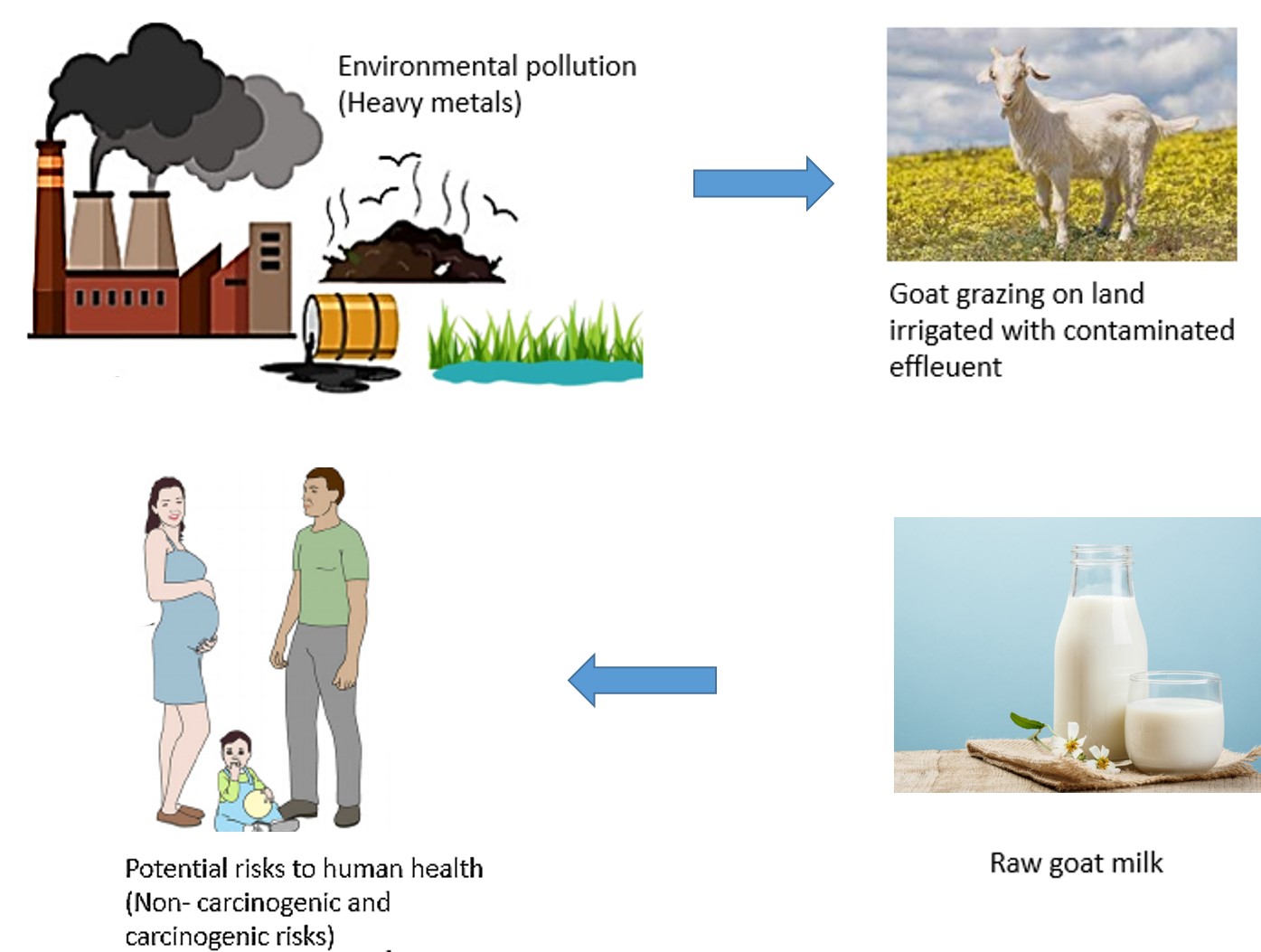
Contamination of the food chain by toxic metals is one of the main concerns for human health. Milk is part of a balanced diet; essential for proper growth, but can also contains hazardous chemicals and contaminants including heavy metals which can be a risk for health. The aim of this study is to estimate the concentration of heavy metals in goat’s milk and to assess infants and children health risks related to milk consumption in Jijel province. Metals, namely Cd, Cu, Pb and Zn were determined by FAAS. In parallel, an online survey was carried out to estimate the daily consumption of milk. Then, non-carcinogenic and carcinogenic health risk values were calculated. The results indicated common to low levels of essential elements (Cu: 0.05 ± 0.001 mg/kg, Zn: 1.87 ± 0.069 mg/kg) in comparison with toxic elements (Cd: 0.018 ± 0.001 mg/kg, Pb: 0.38 ± 0.004 mg/kg). Cadmium content bordered its limit (0.01mg/kg), whereas, lead was higher twenty time the permissible limit. While, daily estimated intake of lead exceeds the limit value (282.35%), target hazard quotient and hazard index of the mixture were below one the safe limit, representing the absence of non-carcinogenic risk. Contrariwise, the carcinogenic risk of Pb and Cd, and their cumulative risk were observed higher than the acceptable limit (Pvalue < 0.001). Based on these results, the consumption of goat’s milk in Jije lprovince seems to be not safe for infants.
Total file downloads: 8